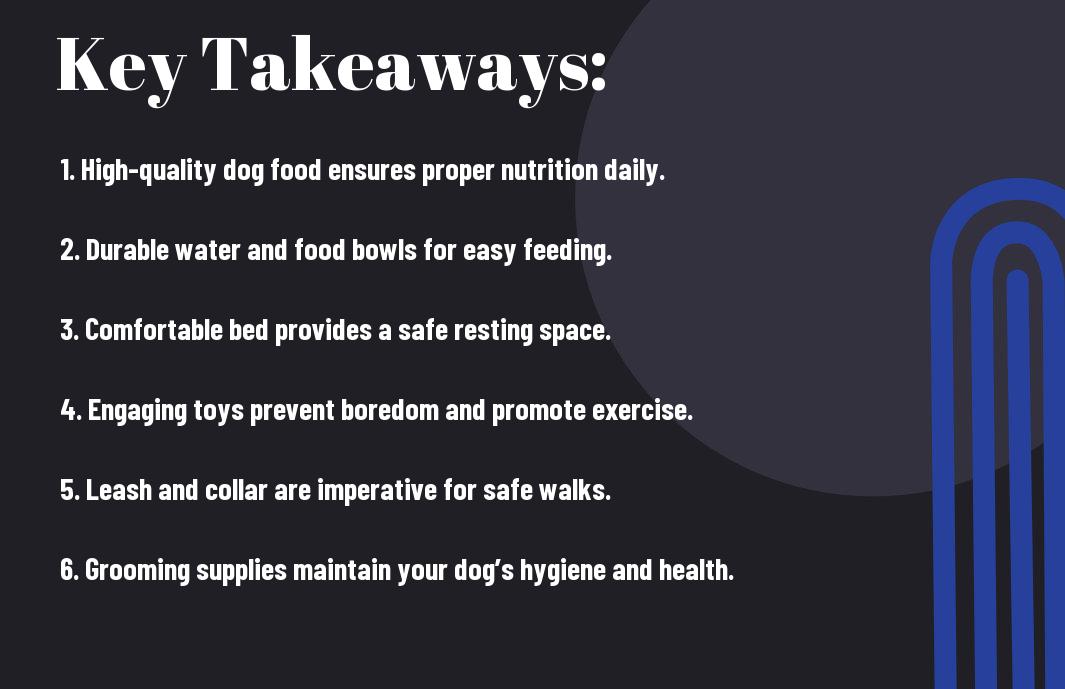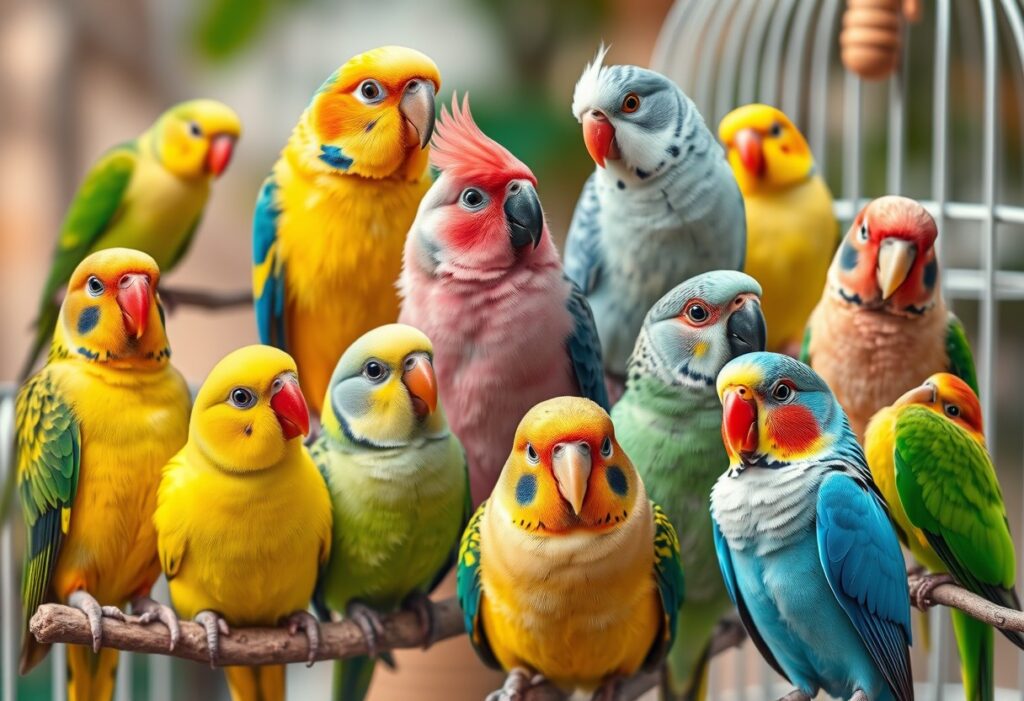Most bird owners underestimate the significance of regular beak maintenance, which is crucial for your feathered friend’s overall health. A well-maintained beak ensures that your pet can eat properly, avoid discomfort, and prevent potential infections that can develop from overgrown or damaged beaks. By understanding how to care for your bird’s beak, you not only maintain its physical wellbeing but also enhance its quality of life. Investing time in this aspect of pet care will lead to a happier and healthier bird, making your companionship even more rewarding.


The Importance of Regular Beak Maintenance
Structure of the Beak
For anyone interested in bird care, understanding the anatomy of a bird’s beak is imperative. The beak, or bill, serves as a multifunctional tool vital for feeding, grooming, and interacting with their environment. It is an intricate structure made up of a hard outer layer, commonly known as the *keratin sheath*, that covers the underlying bone structure. The shape and size of a beak can tell you much about the bird’s diet and lifestyle, from seed-eating birds with stout, conical beaks to nectar-feeders that have long, slender beaks.
The beak’s structure is comprised of several key parts that each fulfill distinct roles. The upper mandible is the top part of the beak, and the lower mandible is the bottom. The maxilla and mandible work in tandem to help the bird grasp, tear, and consume food. Furthermore, smaller features, such as the cere, a soft area at the base of the beak, houses the nostrils and is critical for proper air intake. Regular maintenance helps keep these structures healthy and functional.
Types of Beaks and Their Functions
Anatomy plays a significant role in categorizing the types of beaks and their corresponding functions. Different bird species have evolved unique beak shapes that align with their feeding habits. For instance, raptors possess sharp, hooked beaks ideal for tearing flesh, while finch beaks are short and powerful, perfectly adapted for cracking seeds. The variations are not merely cosmetic; they are imperative for the birds’ survival, enabling them to efficiently exploit their food resources.
Understanding the relationship between a bird’s beak structure and its function can give you valuable insights into proper care and sustenance. Proper maintenance ensures that your birds’ beaks stay healthy, which is vital for their overall well-being. Here are some additional types of bird beaks:
- Hooked beak for tearing
- Flat beak for filtering
- Conical beak for cracking seeds
- Long, slender beak for probing
- Short, stout beak for eating insects
Thou should remember that different beaks signify different needs when it comes to maintenance.
| Beak Type | Function |
| Hooked | Tearing flesh |
| Flat | Filtering water |
| Conical | Cracking seeds |
| Long, slender | Probing flowers |
| Short, stout | Eating insects |
Understanding the differences among these beaks not only enriches your knowledge but also informs your bird care practices. Each type of beak is integral to the bird’s survival, directly related to its feeding habits and habitats.
- Adaptability based on environment
- Maintenance is crucial for health
- Behavior correlating with beak type
- Feeding habits reflective of structure
- Evolutionary significance of beak forms
Thou will benefit from recognizing the key roles that beaks play in your birds’ lives.
| Beak Adaptation | Example Species |
| Seed-cracking | Finches |
| Flesh-tearing | Hawks |
| Nectar-feeding | Hummingbirds |
| Insect-hunting | Woodpeckers |
| Fishing | Herons |
Understanding the intricacies of your birds’ beaks will guide you in providing appropriate care. Regular maintenance directly influences their ability to thrive, feeding comfortably and healthily.
Common Beak Issues
There’s no denying that beak health is vital for the overall well-being of your avian friend. As a bird owner, it’s imperative to be aware of common beak issues that can arise, and understanding them will allow you to take proactive steps toward maintaining proper beak hygiene. In this section, we will highlight some frequent problems that may affect your bird’s beak, including overgrowth, nutritional deficiencies, and injuries or infections.
Overgrowth and Its Consequences
The most prevalent issue you might encounter is overgrowth, which occurs when a bird’s beak grows excessively long or misaligned. This condition can make it challenging for your feathered companion to eat, groom, or carry out other necessary activities, leading to an overall decline in health. If left untreated, overgrowth can result in severe complications, such as pain, difficulty in feeding, and even malnutrition.
In addition to the immediate challenges, the consequences of overgrown beaks can extend beyond discomfort. It can also result in psychological distress for your bird, as the inability to perform natural behaviors may lead to frustration and behavioral issues. Regular maintenance is crucial to prevent overgrowth—a task you should not overlook as a responsible pet owner.
Nutritional Deficiencies
Issues with nutritional deficiencies can also manifest in your bird’s beak health. A poor diet lacking imperative vitamins and minerals often leads to weakened beak structure, making it more susceptible to breakage or abnormalities. You must ensure that your bird receives a balanced diet rich in imperative nutrients to support healthy beak growth and development.
Deficiencies in critical nutrients, such as calcium and vitamin A, can have a profound effect on your bird’s beak. For instance, inadequate calcium can result in brittle beaks that are prone to fractures, while insufficient vitamin A can lead to a dull appearance, making your bird more vulnerable to infections. Therefore, monitoring your bird’s diet and providing them with high-quality feed and supplements is integral to maintaining proper beak health.
Injuries and Infections
With proper care, you can significantly reduce the risks of injuries and infections affecting your bird’s beak. Birds are curious creatures, and their beaks are often involved in exploratory behavior, which can lead to accidental injuries. For example, a bird may chip or crack its beak while trying to chew on inappropriate materials, leading to potential infections if the injury is not addressed.
It’s crucial to keep an eye on any signs of injury, such as bleeding, swelling, or discharge, as these can indicate that your bird is at risk for a more severe infection. If you notice any abnormalities in your bird’s beak, consult with an avian veterinarian immediately to protect your feathered sidekick from complications that could threaten their health and quality of life.

Benefits of Regular Beak Maintenance
Many pet owners may overlook the importance of beak maintenance, but regular care is crucial for the overall well-being of your feathered companions. By prioritizing beak maintenance, you can witness notable improvements in your bird’s quality of life and happiness. Consistent attention to this aspect of their care can lead to significant benefits, including improved feeding efficiency and enhanced health and longevity.
Improved Feeding Efficiency
Regular maintenance of your bird’s beak allows for optimal feeding efficiency. If your bird’s beak is overly long or misaligned, it can struggle to grasp and eat food competently. This may lead to weight loss, nutritional deficiencies, and overall frustration for your pet. By ensuring that your bird’s beak is kept in the right shape and length, you will help them take full advantage of their meals, making eating a less stressful and more enjoyable experience.
Furthermore, a properly maintained beak plays a vital role in your bird’s ability to forage, which is a natural behavior that promotes mental stimulation. This means that a suitable beak condition can also contribute to your pet’s mental health, preventing boredom and the development of problematic behaviors. Regular beak maintenance can therefore lead to a happier and more engaged bird who enjoys its food and environment to the fullest.
Enhanced Health and Longevity
Benefits of regular beak care extend way beyond feeding efficiency; they significantly influence your bird’s overall health and longevity. Birds with healthy beaks are less prone to injuries and infections that can stem from overgrown or damaged beaks. Regularly checking and maintaining your bird’s beak can reduce the risk of developing serious issues like malnourishment or stress-related illnesses, which can lead to a shorter lifespan.
Moreover, a well-maintained beak helps prevent complications such as beak overgrowth and misalignments. These problems can impede basic physical functions like grooming and eating, ultimately compromising your bird’s health and wellbeing. By committing to regular beak maintenance, you are setting the stage for a longer, healthier life for your pet.
Behavioral Benefits
Benefits also encompass positive changes in your bird’s behavior. A well-cared-for beak enables your pet to engage in natural behaviors such as chewing and foraging without difficulty, which are important for their mental stimulation. When your bird can effectively interact with its environment—thanks to a maintained beak—you may observe a more active and sociable temperament.
To summarize, regular beak maintenance not only ensures that your bird can eat and groom efficiently but also has profound effects on its **behavioral state**. A bird that is free from discomfort and able to engage fully will exhibit less frustration and more playful behavior, enhancing your bond and experience with your pet. Bear in mind, proactive beak care leads to a happier bird and a flourishing companionship!
Beak Maintenance Techniques
Unlike many pet owners may realize, maintaining your bird’s beak is crucial for their overall health and well-being. Regular beak maintenance ensures that your feathered friend can eat properly, prevent any pain, and reduce the risk of injuries. By incorporating various techniques into your routine, you can guarantee your bird’s beak remains in the best possible condition.
Inspection and Observation
Techniques for beak maintenance begin with regular inspection and observation. You should closely monitor the size, shape, and condition of your bird’s beak, as any abnormalities can indicate underlying health issues. Be on the lookout for signs such as overgrowth, chipping, or discoloration. Keeping a detailed log of your observations can help you track any changes over time and assist your veterinarian in identifying potential problems.
It is valuable to perform these inspections while your bird is calm, allowing you to assess their beak without causing stress. Additionally, look for any signs of difficulty in eating, which could signal that your bird may need immediate attention. Regularly observing your bird in its environment can also provide insights into their behavior, helping you to catch any signs of discomfort early.
Corrective Trimming Methods
Corrective trimming methods are crucial for managing an overgrown beak. If you notice that your bird’s beak is excessively long or out of alignment, trimming may be necessary. This process should ideally be performed by a qualified avian veterinarian, as they possess the skills to provide a precise trim without causing harm or stress to your pet. It’s vital to use appropriate tools and follow safe practices to ensure that the procedure is both effective and painless.
Another approach is to create a conducive environment for natural beak wear. Providing your bird with natural materials like wood, mineral blocks, or abrasive toys encourages them to gnaw and grind their beak, promoting healthy growth. These activities help maintain the shape of the beak while ensuring that it remains functional. Regular check-ups with an avian veterinarian can also be a part of your trimming routine to keep your bird’s beak in top-notch condition.
Nutritional Support and Dietary Tips
Inspection of your bird’s diet is equally important for proper beak maintenance. A balanced diet rich in crucial nutrients supports healthy beak growth and ensures that your bird can thrive. Include a mixture of high-quality pellets, fresh fruits, and vegetables in their diet, focusing on options rich in vitamins A, D, and calcium. These nutrients are critical for maintaining beak health and preventing issues like overgrowth or weakness.
- Ensure a varied diet with high-quality pellets.
- Incorporate fresh fruits and vegetables.
- Focus on foods rich in vitamins and minerals.
For instance, offering your bird leafy greens such as kale or dandelion greens can significantly contribute to their dietary needs. You should also factor in texture, opting for foods that require your bird to chew and break them apart, which promotes natural wear on their beak. After incorporating these dietary tips into your feeding routine, you will likely see improvements in your bird’s overall health and beak condition.
Another great option is to introduce calcium-rich foods such as cuttlebone or oyster shells. These naturally abrasive items will not only provide crucial nutrients but will also assist in maintaining proper beak length and strength. After making these adjustments to your bird’s diet, be sure to regularly monitor and document any changes in their beak condition or eating habits.
Conclusion
Summing up, regular beak maintenance is necessary for ensuring the overall health and well-being of your pet bird. Beak health directly impacts their ability to eat, groom, and communicate effectively. By attending to your bird’s beak regularly, you can prevent common issues such as overgrowth, malformation, and injury that could otherwise lead to discomfort or serious health complications. Implementing routine checks and providing appropriate chew toys can significantly enhance your bird’s quality of life.
Moreover, staying informed about the signs of beak problems and understanding the specific needs of your bird species is crucial in your role as a responsible pet owner. By prioritizing beak maintenance, you’re not just enhancing your bird’s physical health; you’re also fostering a closer bond through proactive care. Do not forget, a well-cared-for beak is a happy beak, which in turn contributes to a happy, healthy bird that thrives under your attentive care.
FAQ
Q: Why is regular beak maintenance important for pet birds?
A: Regular beak maintenance is crucial for the overall health and well-being of pet birds. Birds’ beaks grow continuously, and without proper wear and trimming, they can become overgrown, leading to difficulty in eating, preening, and other imperative behaviors. Overgrown beaks can also cause pain, injuries, or infection. Regular maintenance helps prevent these issues, ensuring that birds have the ability to eat properly, communicate effectively, and maintain their grooming habits.
Q: What are the signs that a bird needs beak maintenance?
A: Some key signs that a bird may require beak maintenance include a visibly overgrown beak that appears curved or misaligned, difficulty grasping food or toys, excessive scratching at its beak, or changes in eating habits such as refusing to eat certain foods. Additionally, if you notice any chipped, cracked, or discolored areas on the beak, it’s important to seek veterinary attention. Early detection and intervention can help prevent serious complications for your feathered friend.
Q: How can I maintain my bird’s beak at home, and when should I consult a vet?
A: While some aspects of beak maintenance can be managed at home, such as providing appropriate toys to encourage natural wear and offering a balanced diet that promotes beak health, it’s imperative to consult a veterinarian for regular check-ups. A vet can safely trim the beak if it’s overgrown and also assess the overall health of your bird. If you notice persistent issues, such as ongoing difficulty eating or a beak that continues to grow incorrectly, seeking professional help is crucial to address any underlying health concerns.










